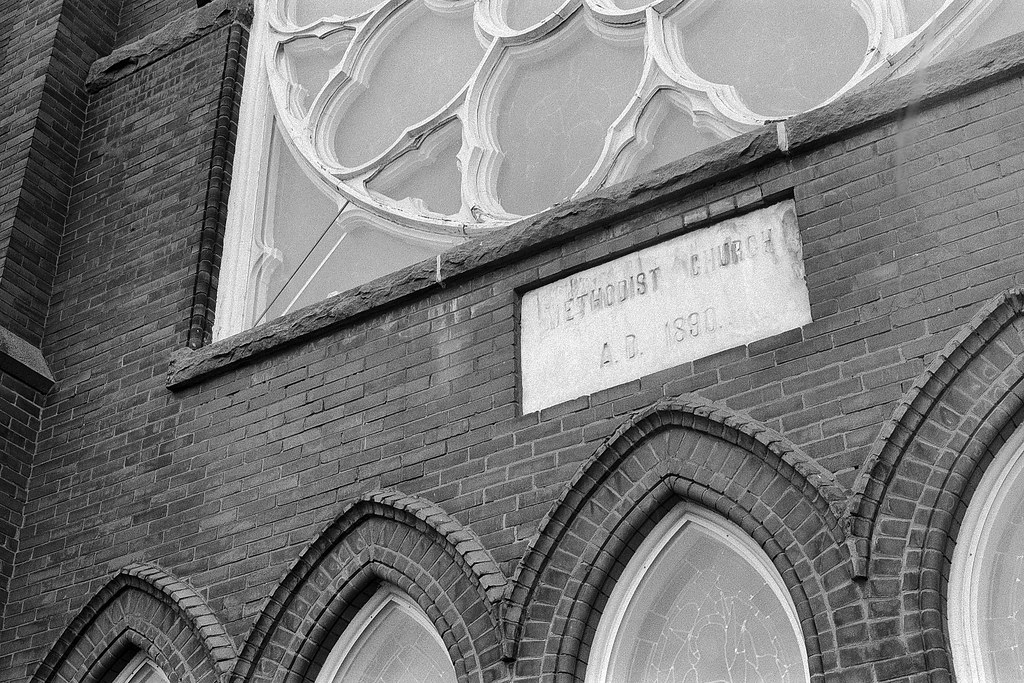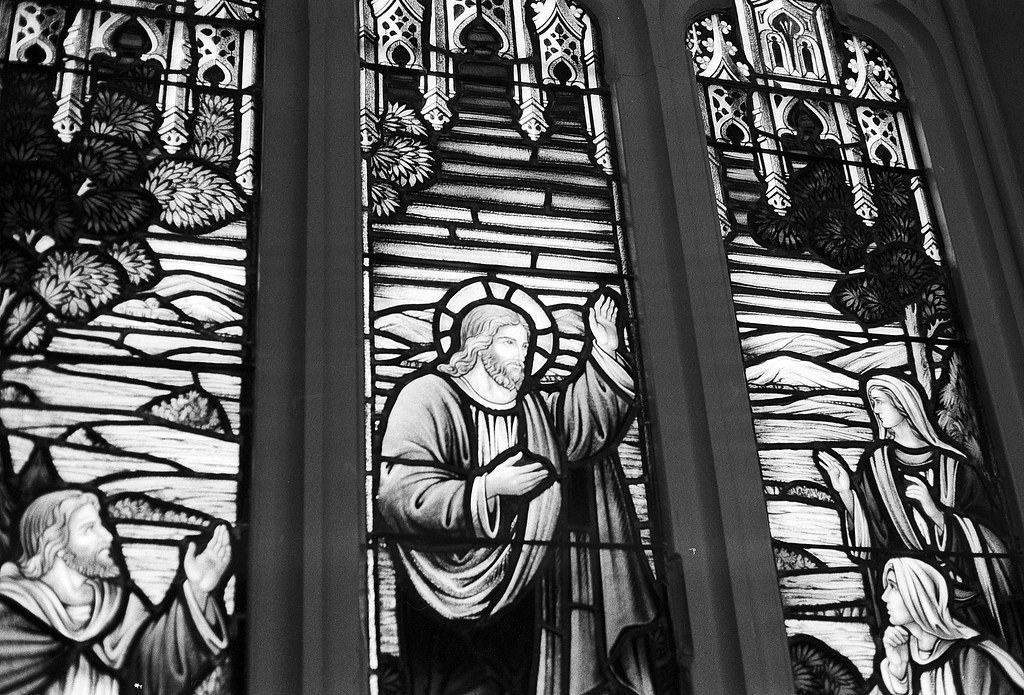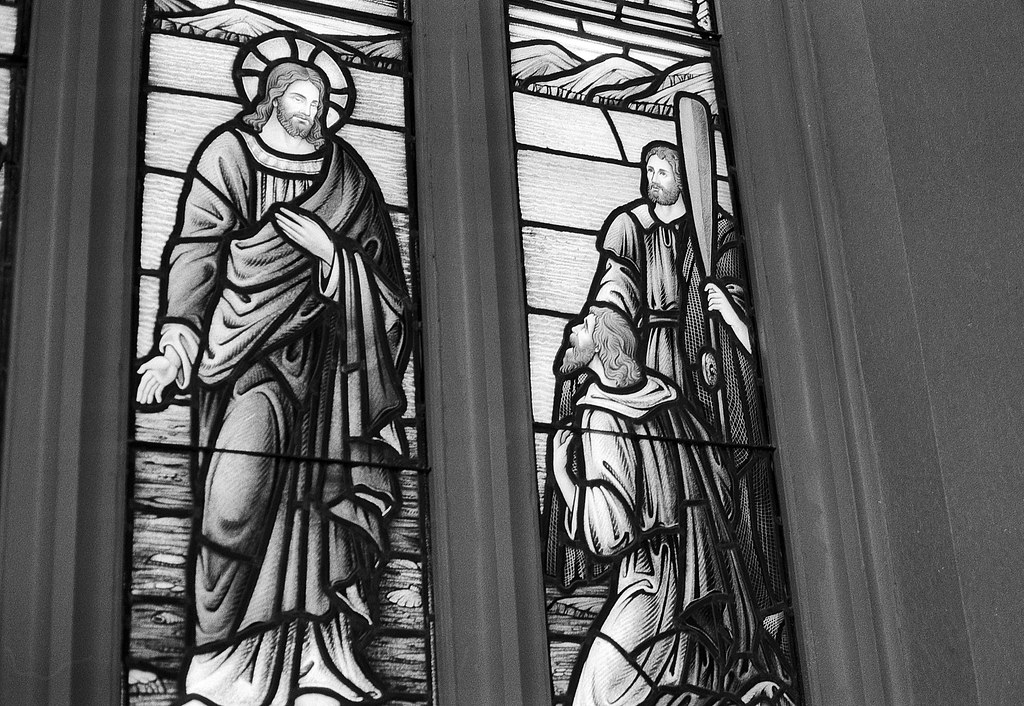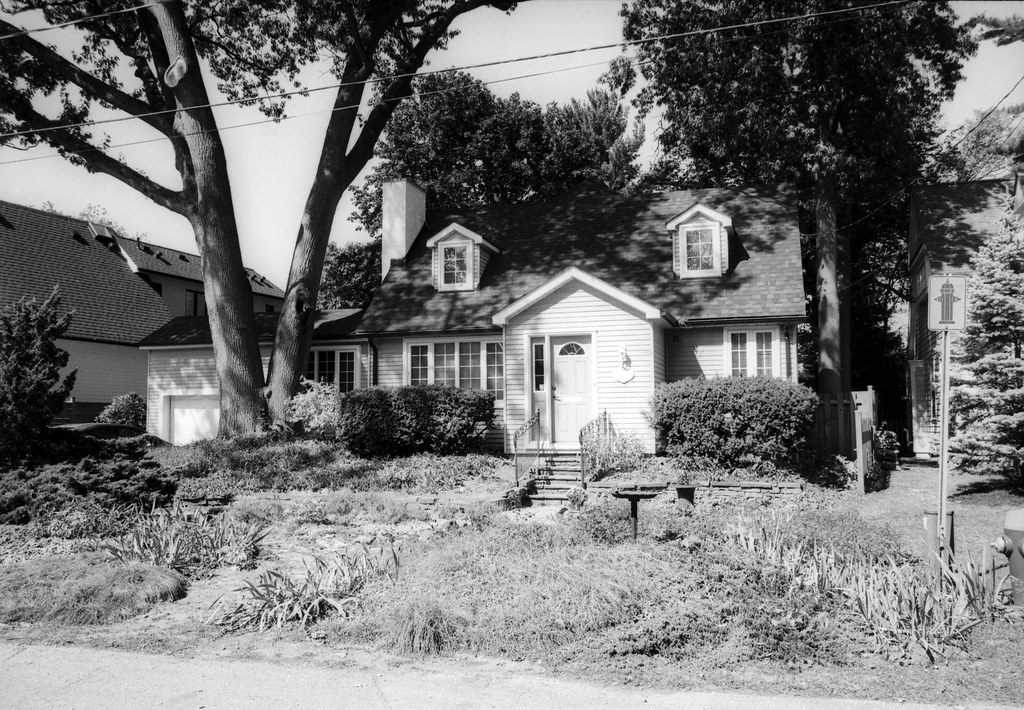When it comes to reviewing cameras, I love reviewing the cameras that have impacted photography or are relatively cool and unique. And this camera is one that I have referenced a couple of times in the past as being part of a significant stepping stone in Canon’s journey towards an autofocus camera. While autofocus first hit the markets in point-and-shoot cameras, building an AF system for an all-in-one camera is easy; putting it in an interchangeable lens SLR is another ballgame. When Minolta jumped right in with the A-Mount, Canon took a more cautious approach even before Minolta launched the Alphas. The AL-1 was a stepping stone to building an autofocus system without making an autofocus camera. The Canon AL-1, a part of the popular A-Series, featured a quick-focus system that helped photographers know when their image was in focus. But that’s not all that set the AL-1 apart from the main body of the A-Series. Thanks to Ray Rheubottom for donating this camera for reviewing.
Camera Specifications
Make: Canon
Model: AL-1
Type: Single Lens Reflex
Format: 135 (35mm), 24x36mm
Lens: Interchangeable, Canon FD-Mount
Shutter: Cloth Focal Plane Shutter, Electronic (Stepless): 2s – 1/1000s, Manual: 1/15s – 1/1000s + Bulb
Meter: Center-Weighted SPC TTL Metering, EV3.5 ~ EV18, ASA-25 – ASA-1600
Autofocus: 3x CCD TTL Focus Assist
Dimensions (WxHxD): 142.1×86.5×47.6mm
Weight: 490g (w/o batteries)
Power Source: 2x AAA Batteries
Year of Manufacture: 1982 – 1985
Background
In 1933 Yoshida Goro and Uchida Saboro planned to produce a Japanese clone of the Leitz Leica II, naming their new company Seiki Kogaku; they purchased a Leica II, disassembled, studied and built one different enough to avoid legal woes and in 1935 released the Hansa Canon or Canon. The Canon was an M39-based rangefinder that initially used Nikkor lenses, but after 1937 Seiki began to produce lenses in-house. While Seiki remained a smaller camera producer, the fact they escaped the war with minimal damage to their manufacturing base meant that they could ramp up production. The post-war cameras coming from Seiki were greatly improved in quality over the pre-war models, and they quickly gained a strong reputation among domestic, foreign and occupation markets. Seiki would rebrand itself to Canon Camera Co in 1947. By the mid-century, the popularity of SLRs began to rise, and the release of the Nikon F in 1959 made Canon release their own SLR, the Canonflex. The Canonflex share many similar features to the Nikon F, with an interchangeable prism, lenses (R-Mount), and other accessories. The Nikon F would get all the attention of professionals; the need for more marketing and the complex design of the Canonflex would push it into a secondary role despite having some unique and original features found only in the Canonflex. The designers took things back to the drawing board and, in 1964, released the much improved Canon FX. The FX featured a more traditional design and simplified internal workings. It also used a new version of the R-Mount; while still a breach-lock system, the FL-Mount used a much easier-to-operate interlink with the camera and could allow TTL open-aperture metering. That feature was first found in 1965’s Canon Pellix. The Pellix also featured a pellicle mirror, unlike a traditional SLR, which uses a reflex mirror; a pellicle mirror allowed a majority of the light through to the film while a minority bounced up into the viewfinder. The pellicle mirror would end up being a dead-end technology, TTL metering would stay, and with the next update in the Canon break lock, the FD-Mount would arrive in 1970 with the first professional SLR, the F-1.

But the F-1 remained an entirely mechanical and manual camera; it did include TTL metering and had a Servo EE finder available that provided aperture priority metering. But the real sleeper in these early FD-Mounts is the Canon EF, released in 1973. The EF featured a hybrid electro-mechanical shutter and shutter-priority auto-exposure using the FD-Mount. The 1970s also saw the first charged coupled devices (CCDs) produced and improvements in microprocessor and semi-conductor technologies. Canon would take advantage and, in 1976, launch the A-Series with the Canon AE-1. The AE-1 is, from the ground up, an entirely electronic computer that uses a microprocessor to handle the shutter priority auto-exposure and the shutter speeds. The AE-1 would prove an able and popular camera, with about a million units sold and would launch Canon’s successful line of consumer and prosumer camera bodies. But the world was changing, and in 1977, Konica released the C35AF, a fixed lens autofocus point-and-shoot camera. Canon’s response was 1979’s Sure Shot, a fix-lens point-and-shoot camera that used an active autofocus system. The same year as the Sure Shot, Canon released the AV-1. A unique entry in the A-Series as it uses aperture priority metering only with no manual metering options. By this point, other camera makers would work towards building an autofocus SLR, a far more complex camera to build than a point-and-shoot. Pentax and Olympus were first in the game, with the ME-F and OM-30, respectively. Still, these only did autofocus with specific lenses and would add a focus confirmation system for existing manual focus lenses. In 1982 Canon released the AL-1, based around the AV-1; the AL-1 features the quick focus system, a trio of CCDs that would confirm that a single point is in focus by using contrast measurements through an etched semi-silvered reflex mirror. The AL-1 is designed to use aperture priority metering with limited speeds for metered manual. Canon would market the AL-1 as one of the 1984 Olympics products but would, in 1985, take the system developed in the AL-1 and install it in the T80, which drove three specific autofocus lenses. I am unsure when the AL-1 was discontinued, but it was either in 1985 or 1987 with the introduction of the EOS system.




Impressions
The AL-1 is not a well made camera, it’s almost as if Canon was ready to wind up the entire A-Series and move onto the next big thing. What’s rather interesting is that the AL-1 is almost like a hybrid of the A-Series and the T-Series. It’s almost as if the designers wanted to keep the A-Series look, but add some additional ergonomics from the T-Series, most noted with the chunky handgrip that houses the pair of AAA batteries that power the camera. The camera itself is also far lighter than the AE-1, and it appears to have more plastic in its construction. But still it looks like a well made camera, and I’m sure parts of it are well made, but it is that chunky batter grip that gets a terrible reputation, the battery door tends to fall off or the metal contact inside the batter door will fall out. Which leaves the camera worthless. The camera’s layout falls in line with the other A-Series cameras of the later era and it takes a lot of its design cues from the AV-1, with a singular top plate dial, that controls the limited shutter speeds, and puts the camera into Aperture Priority mode. And one thing the AL-1 has is a dedicated on/off switch (A (Automatic) for On, L (Lock) for Off) and doesn’t suffer the same battery drain issue as my AE-1. This switch also doubles as the self-timer activator. Thankfully there’s no way to accidently turn on the camera and go right to self-timer, it’s a longer pull to activate the self-timer. The viewfinder isn’t too bright, but it’s decent enough for what you’re doing, the quick focus is located at the bottom, with a needle indicator to show the metered shutter speed, based on your aperture. So you know what to see the shutter for in metered manual, if that is even possible. I feel the AL-1 is the prototype that got out of the factory too early, it feels incomplete, and rough around the edges. It feels that Canon rushed the production to get a camera to market to see if their quick focus system would work in real world applications before using it in a fully autofocus camera a few years later.




Experiences
Despite feeling cheap, the AL-1 isn’t a bad camera to work with in the field, once you get past the limitations. Loading the film is straightforward and if you know how to load an SLR of this era, then you’re good to go. Since the AL-1 is based around the FDn lenses, these are again straightforward to use and mount as there’s no locking ring on the lens, so you can mount and dismount lenses with one hand. But that doesn’t mean you cannot use the original FD lenses, they work perfectly. As someone who is used to aperture priority metering, then the AL-1 is a perfect fit, as unlike the other cameras in the A-Series, the AL-1 is designed to work in aperture priority. Although the one thing I did notice is that it seems to also work in a ‘secret’ program mode, when I had the lens set to the “A” setting. But I didn’t trust the camera in this case, so I stuck with a normal operating mode. The viewfinder is decent, but lacks that split prism to help with manual focusing, instead Canon forces users to either use their eyes to determine if the scene is in focus, or use the quick focus system. This means placing your subject in the target box, then using the three LEDs, a left and right facing arrows in read, and a green circle in the center. It works well, although is a bit limited, but honestly, my D750 uses the same basic system when I’m manually focusing my lenses. Where the AL-1 falls down, is when using it in metered manual mode, because of the limited shutter speeds, your slowest speed is 1/15″ you do have bulb mode, but again, that’s only good for longer exposures. But overall, the AL-1 is a decent camera to use, nothing particularly special, even the quick focus system doesn’t make a big enough splash in my mind.




Optics
If you’re thinking that you can only use specific FD-Mount lenses on the AL-1 with the Quick Focus feature, I can assure you that you can use any FD lens with the AL-1 and get full use of the QF feature. And I include both the FD and New FD mount lenses in this statement. And Canon released a wide selection of lenses in the FD mount that will cover almost every need with your photography. If you are getting started with the FD system, I suggest investing in some good lenses to get started and then update the camera body quickly. One of the best parts about the FD-mount is that the AL-1 will accept and work with both the original FD and New FD lenses, there is no difference in the optical quality or build on between the two mounts. The only difference is how you mount and dismount the lenses from the camera. I prefer the New FD lenses with a button release on the lens, than the collar lock on the original FD lineup. And if you want to be period appropriate with the AL-1, the New FD lenses are the way to go. Some good choices is the 28mm f/2.8, 50mm f/1.8 S.C. and the 135mm f/3.5, this gives you a basic three-lens kit that won’t break the bank as you can find these lenses for under 100 dollars on the used market.




Lowdown
The AL-1 is an interesting camera, at least to me. I mean interesting because the AL-1 is an oddity from Canon of the era, but not entirely out of character. Canon of this part of the 20th Century was throwing new technology out at random, seeing what would stick within the photography world. Take a look at the older Canon Pellix, while the fixed mirror idea didn’t catch out in a major way until much later, the Pellix was a testbed. The AL-1 is the same idea, Canon was starting to toy with the idea of an autofocus SLR but wanted to make sure their idea for a range finding system would work in reality. Sadly, the AL-1 suffered some major weak points that prevented it from being a good camera. Besides the glaring build-quality issue, there is also the matter of the lack of features. Canon probably would have produced a better camera if they had stuck with the AV-1 model without any manual shutter speeds period. Taking it further, they should have used this system with the T70 from the start. On the used market, these cameras go for a wildly different range of prices. Most on average are under 100$, with many running from 30-60$, there are some outliers going for over 100$. The one thing you need to watch out for is that the camera is fully functional with all the weak parts intact. I’m on the fence when it comes to a recommendation. If you can find one that functions, it’s a good camera, plus as a part of Canon and overall the history of photography, the AL-1 is a worthy addition to any FD tool kit. Also as the last entry into the A-Series, it will complete a collector’s tool kit (but it does come in both black and two-tone, so you might need two). But as a first camera it may not be the best option as it might be more frustrating for a new user. So take these things into consideration before jumping in.
Further Reading
Don’t just take my word on the AL-1; you can check out the reviews by other awesome camera reviewers!
Mike Eckman – Canon AL-1 Review
Down the Road – Canon AL-1 Review
Emulsive – The Canon AL-1: Do opposites attract
Peter Vis – Canon AL-1 Review
678 Vintage Cameras – Canon AL-1 QF: The End of an Empire
John’s Cameras – Canon AL-1
Flynn Marr Photography – Canon AL-1: A first attempt at autofocus, almost
Filmphotography.eu – Canon AL-1

